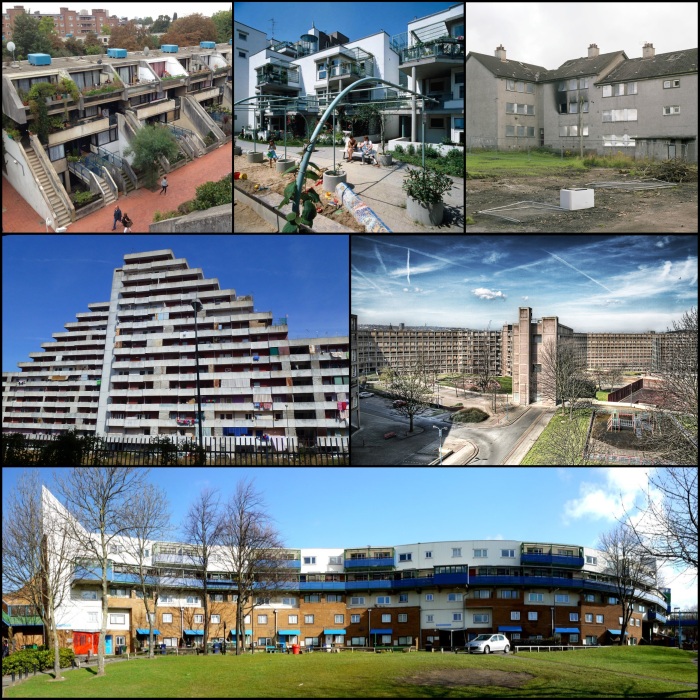The need for affordable housing has been a constant concern since the demographic transitions that occurred during the industrial revolution and is still an extant issue in the pursuit of addressing housing inequality, which social housing seeks to remedy. The approaches to social housing are evident in the Western world and, as the images detail, the successes or failures of such projects have been preserved for the efficacy process of history. Though most social housing is owned and managed by the state, which ideally provides affordable or rent free housing, some social housing is administered by non-profit organizations which ultimately seek to address housing inequality.
The collage of images all present public housing from different periods of recent history in Europe, with varying appeal and desirability. For instance, the one image that jumps out at me is the center right image of a multi-story concrete structure, which many Americans would associate with public housing in America, but at the same time is reminiscent of Eastern bloc, Soviet inspired housing, with utilitarianism as the overall engineering driver, making aesthetics a little lacking compared to the other images. The adjacent image to the left, though concrete in its construction, seems to have a more creative approach to design and still maintains an aura of social housing with laundry drying from the balconies. These two social housings were probably made prior to the 1980s, as the 1970s seems to project the height of iconic concrete multi-story structures. The top right image seems to be the progressive next step up from the iconic concrete multi-stories with more spacious living areas and a marginally higher standard of housing, making for a more content tenant. The bottom image presents social housing with an appreciable sense of style, not exquisite by any means, but adequate to house tenants with varied income levels, seeming reminiscent of Medieval housing where all economic classes intermixed in their housing, without the thatched roofs of course. The top two images to the left by far present social housing that functions as both a remedy for housing inequality and serves as a means of dispelling the stereotypical association of public housing with the “poor,” as both these housings could easily be prime rental units in the United States. The housings integrate green space within the units presenting an appealing, approachable building that provides a clean looking living space for the residing tenants. This seems like the most ideal form of public housing but is it the most practical?
There are definitely building space concerns within European cities making the smaller more open building approaches seem less practical but harkening back to the concrete multi-stories doesn’t seem like an adequate redress to housing inequality. The demand for affordable housing will always be an issue of great concern in Europe, which brings to light the European approach in comparison to the American approach to public housing. The guiding principle of the “American dream,” house ownership, etc., will always be a hindrance to the American approach to public housing, never really truly addressing the problem of housing inequality. The European approach seems to more genuinely tackle the issue of housing inequality by making living conditions and all around standards of living more egalitarian, the ultimate outcome of which history will judge.

These are all images of social housing projects in Europe…discuss (both the images and the history, execution and success of such projects)…